Nr. 16by Peter Conrad |
Nr. 16by Peter Conrad |
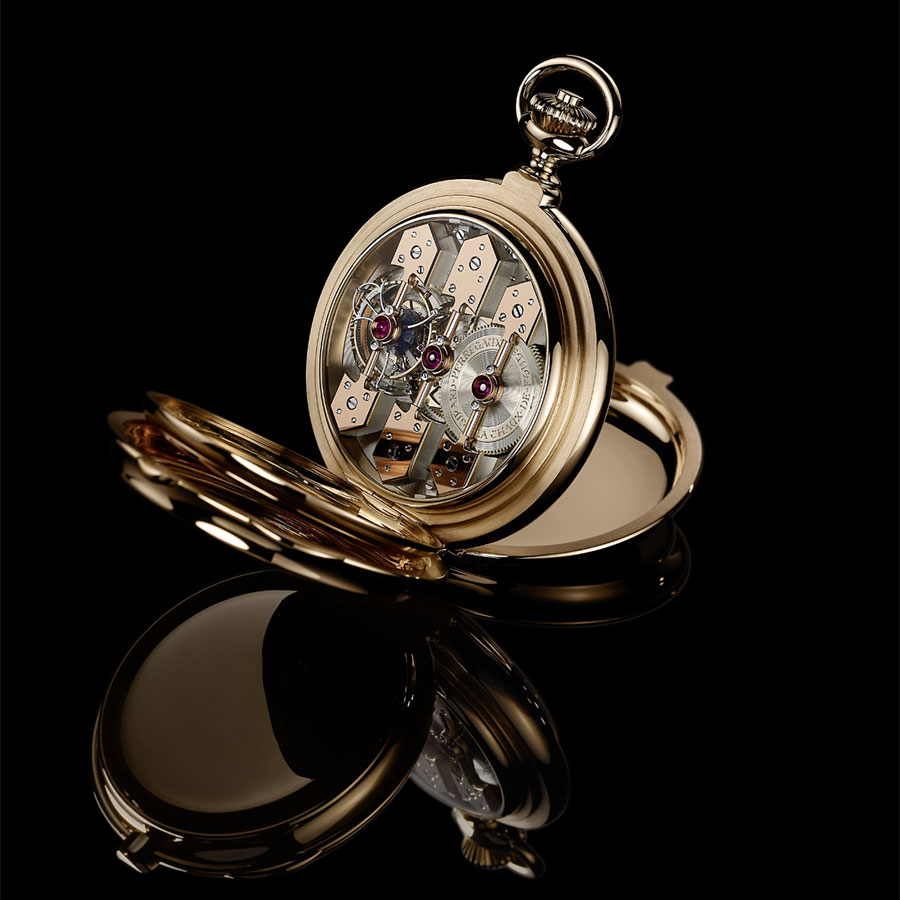 a beauty and a beast |
IntroductionWhat makes watch enthusiasts tick? What makes us believe? And where exactly is the fascination of watchmaking to be found? The ingredients may sound familiar: 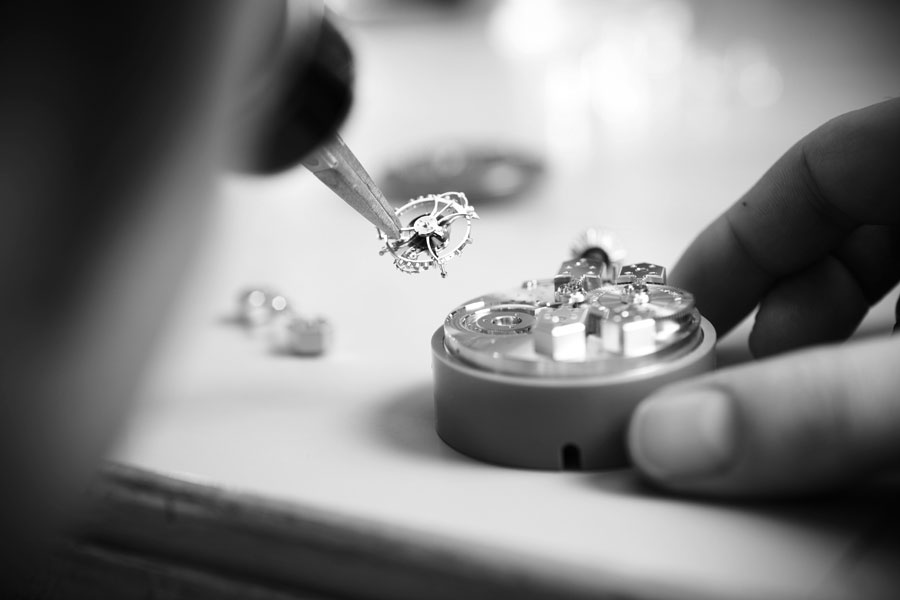 not 1791, not 1891 Sounds like one of these brand history stories, of swiss young watchmakers in the 1800īs driven by the quest for precision and resulting in a famous brand name?
But at the same time, it is not. The history of Girard-Perregaux spans more than 200 years and is full of interesting watches and people. Alas, this part does happen right now. And because watchmaking is more than just a famous name on a watch dial. Let me jump on a few sober facts: 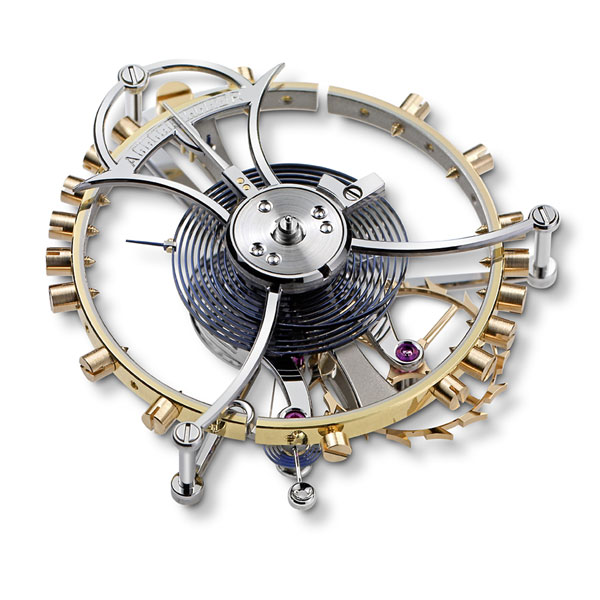 a beating, dancing heart The magical word "TOURBILLON" inspires true enthusiasts dreams - yet the piece weīre going to have a closer look at is so much more. Itīs not a revived ancient movement, "pimped" and dressed up to meet a contemporary desire for nice views. It is a piece with a very unique background and heritage, sure. But itīs first and foremost the testimonial of a greatly talented watchmaker. Fast flashback, 110 years ago: 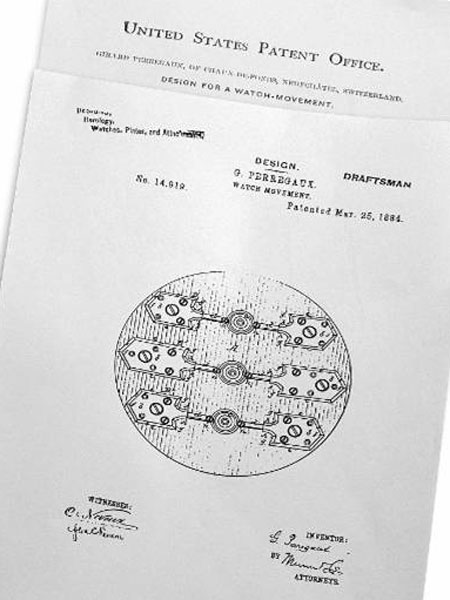 1884 patent Following their original purpose all these have been ultimate precision instruments in a history of outstanding precision watches, like the watch no. 168230 "La Esmeralda". And the results do speak for themselves: 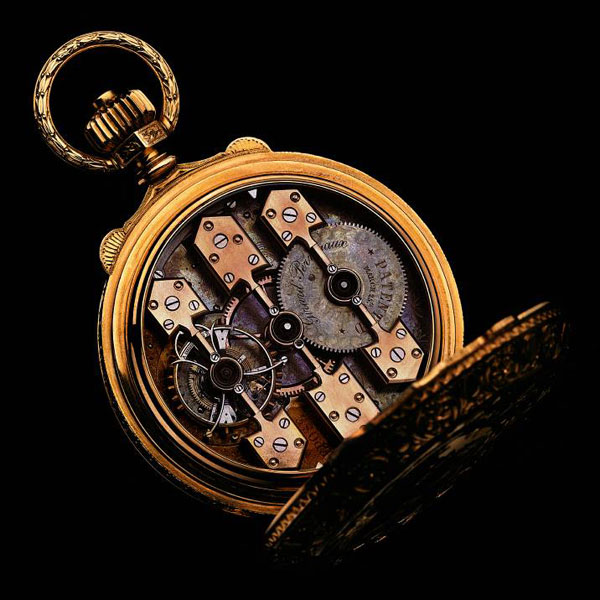 "Esmeralda" The Girard-Perregaux tourbillons were produced until the 1910s, then production came to an end. The reasons are subject to many speculations, but it well may be the rise of wrist watches (which Girard-Perregaux also was first to introduce in 1881) in that era played itīs role.
Just think of shellac and vinyl discs, in a modern Blu-Ray and MP3-world... 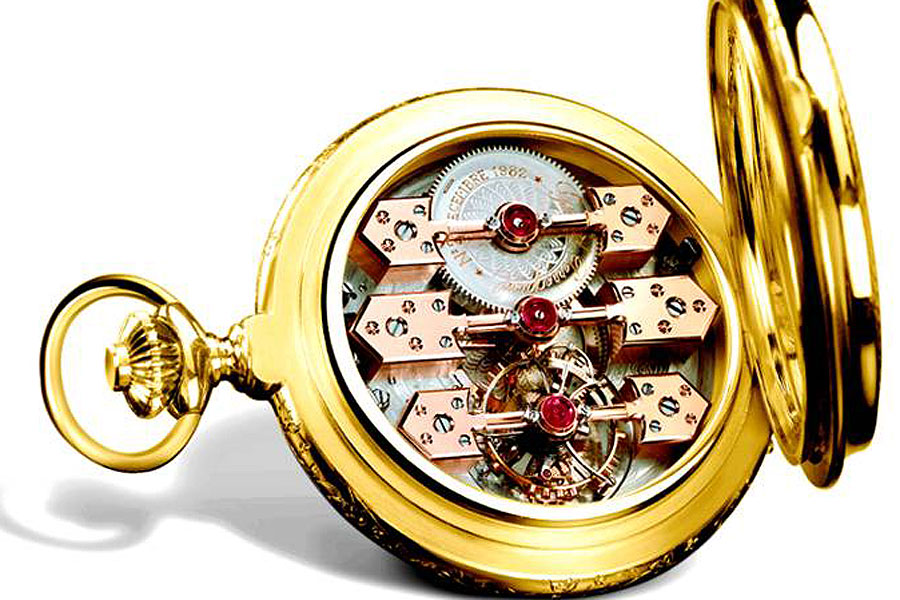 No. 1 in 1982 Yet, not all of these came to life then. |
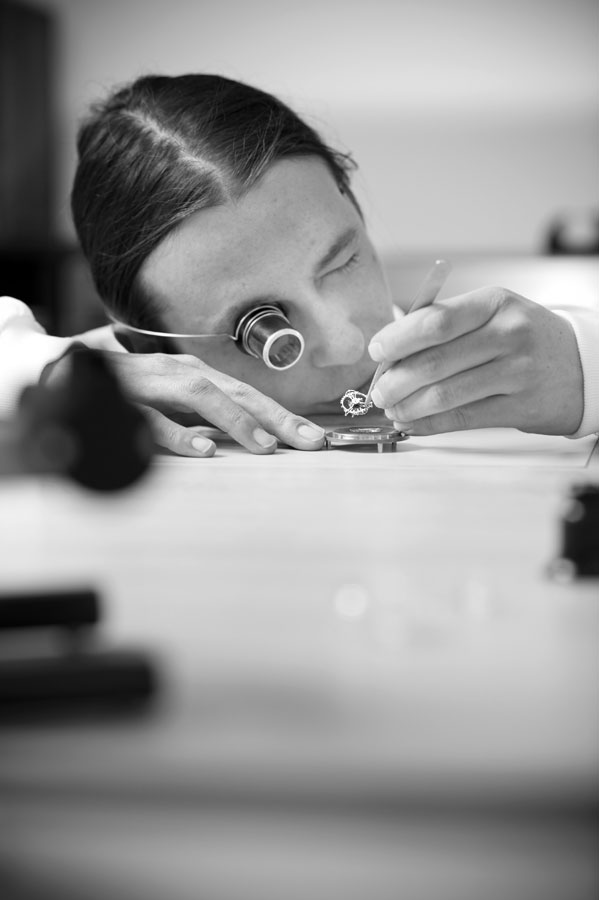 skills, passion - and patience |
Principles and History
A closer look - whatīs the sense of a rotating device in a watch movement? 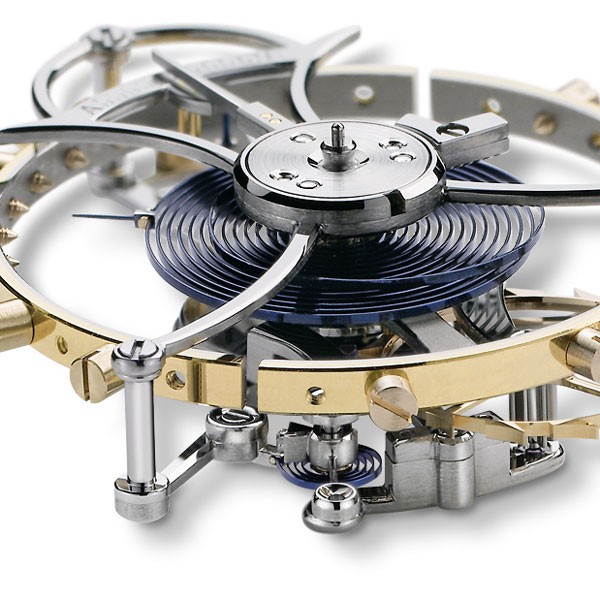 miniature marvel The complex and filigree mechanism became increasingly interesting since mid 19th century, for two main reasons:
First, the growing number of international exhibitions, where these miniature mechanisms found a lot of interested audience.
And second, an increasing number of world-wide timing competitions to go along these lines. It took almost 70 years and several generations of watchmakers to revive the Tourbillon at the height of the Swiss watch crisis, when mechanical watchmaking faced a siege by quartz watches. At that time, Girard-Perregaux started a production run of 20 Tourbillon watches, to commemorate both traditional swiss watchmaking skills and the original Tourbillon with three gold Bridges of 1889. But almost everything required to create such a piece seemed lost; for the watchmaker in charge, it was necessary to discover long-forgotten manufacturing skills and watch elements that had vanished. In 1982, after almost 1,500 hours of work, the first piece emerged and attracted the highest of praise. |
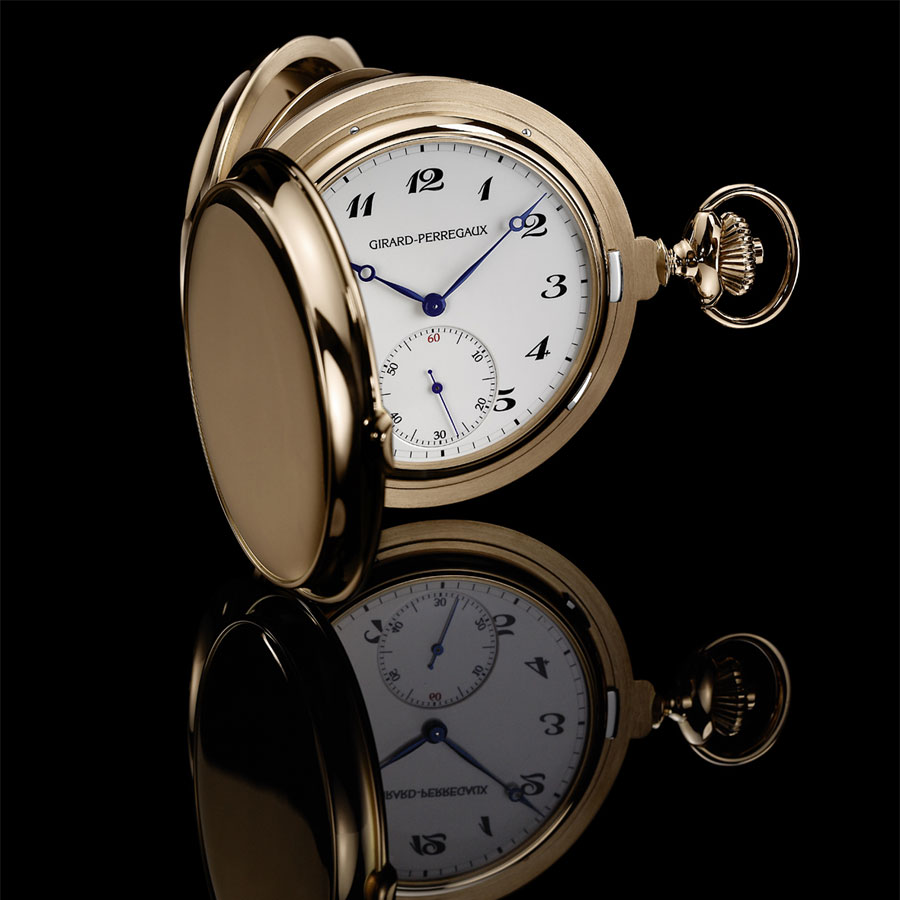 a beautiful face |
Technical FeaturesThe basic desire for this new "1889" Tourbillon was to bring a historic legend back to life. The vision: a watch with all the "bells and whistles", all watchmaking highlights just like Constant Girard-Perregaux did more than 100 years ago. 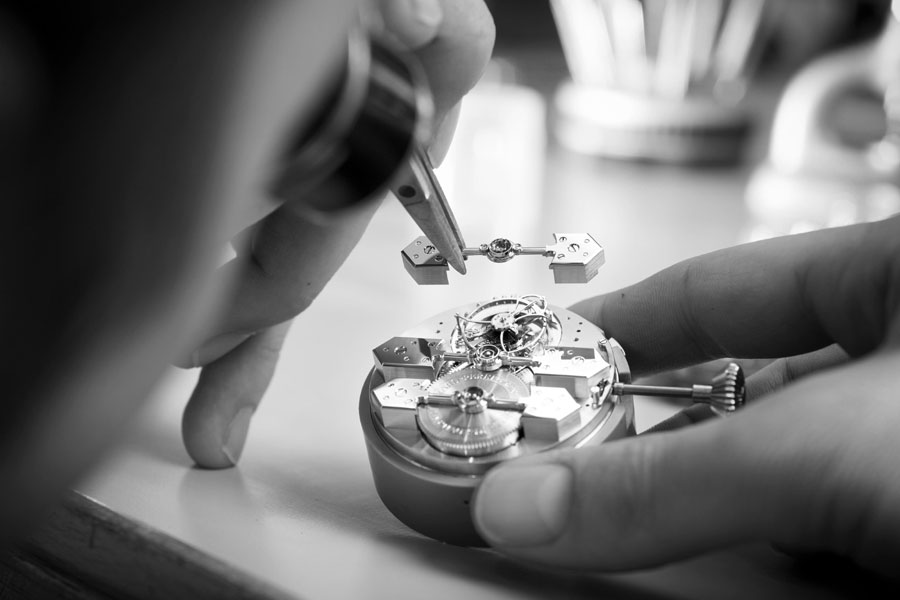 not 1889, but 2010 TOURBILLON CAGE WITH BI-METALLIC GUILLAUME BALANCE
The shape of the Tourbillon cage is a hallmark for those "in the know". Girard-Perregaux ranks among the Haute Horlogerie brands with the richest tradition and greatest legitimacy in creating Tourbillons. At the same time, the lyre-shaped tourbillon cage is unique to the brand, being a direct heritage of Constant Girard-Perregaux since about 1880.
This Tourbillon carriage consists of 92 components, most measuring not more than a few 1/10 of a mm.
Keeping in mind this is a hand-made piece, imagination has not to fly to guess the skills and patience required in its creation, applying a multitude of finishes, assembly and setting. 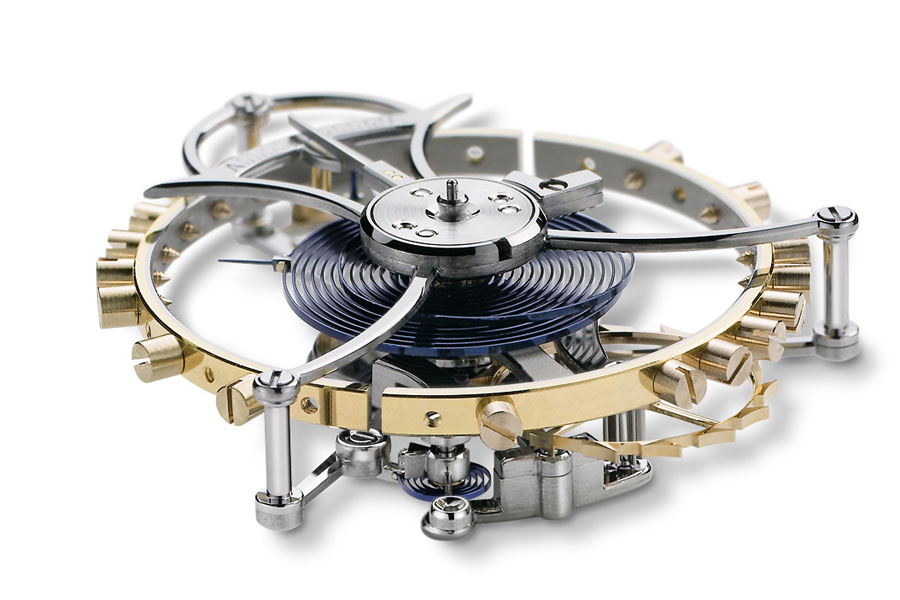 the cage PIVOTED DETENT ESCAPEMENT
Like so often, more than one road leads to Rome (or Neuchatel). In search of accuracy watchmakers found new and different construction to regulate the "beating" of a watch (to be exact: escapements).
One of them, at the same time the construction probably most often found in the most accurate precision watches, is a so-called "detent" escapement. The detent delivered a considerable improvement in accuracy.
It is not only a lubrication-free escapement (and this without modern high-tech materials, since 130 years ago!!). But it is a so-called "mono-impulse" escapement; unlike the classic "tick-tack" of a swiss lever escapement, only one impulse ("tick") is delivered to the balance.
The effect is possible to recognise even without looking at the movement: the characteristic sound with a loud "tick" is followed by a "tock" (which is caused by the spring to move back).
But thereīs a downside as well; the detent escapement is exceptionally demanding to produce, requires more time for adjustments and is likewise sensitive to impacts.
Yet it did proof itself, which was reason enough for Constant Girard-Perregaux to integrate these in many of his watches.
No surprise, a traditional piece like this is equipped with a so-called pivoted detent escapement in an unique shape of Girard-Perregaux.
The detent is mounted on pivots and a hairspring, attached to the stud, holds the detent in position, slightly resisting its release. In addition, a counterweight ensures perfect balance of the detent.  detent and gold spring ANTI-TRIPPING SAFETY PIN
In order to minimize disturbing effects by shocks, the escapement features a highly uncommon safety system: an anti-tripping pin placed on the hairspring.
Tripping in chronometer escapements occurs by excess of amplitude and results in the escapement to unlock the escape wheel a second time during an impulsing vibration.
Basically, such will cause two teeth of the escape wheel to move and the seconds hand to jump by two seconds. This of course is anything else than accurate. 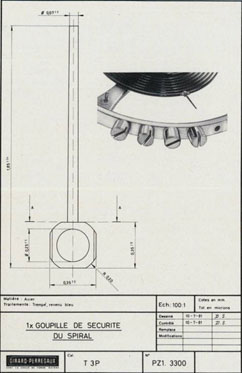  old drawing - new result BARREL WITH "MALTESE CROSS" STOPWORK It is long know decreasing energy supply is a major challenge for highly accurate timekeepers. The mainspring does release itīs energy not in linear, but a energy (or torque) is substantially higher when the watch is fully wound up. The effect of changing power supply is the amplitude of the balance (the amount it will swing back and forth) not to be constant either. And because the balance greatly influences timekeeping, this will affect the watch rate. As a countermeasure, the range of use of the barrel spring is limited by a satellite-gear construction. This will act as a stopwork. The "Maltese Cross" allows for energy release of the mainspring, but not the first and last coils. This way, the range of spring power release is optimized and equal. On a side effect, long-term performance is improved at the same time. |
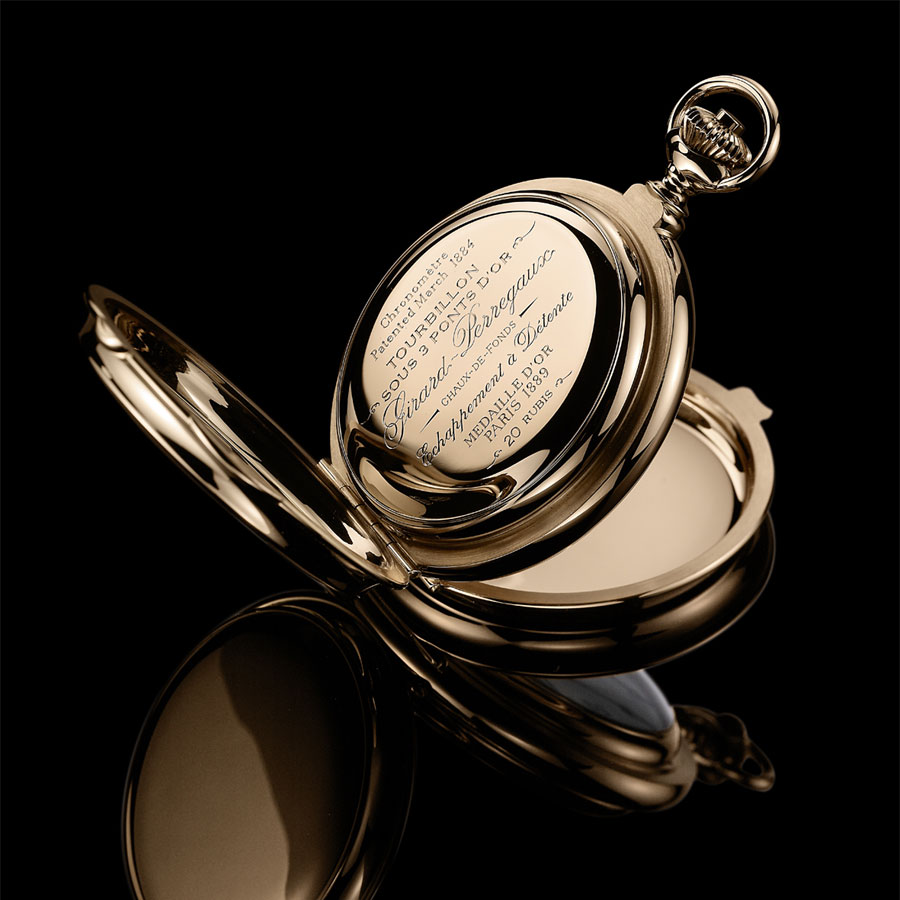 a rich body |
TOURBILLON WITH THREE GOLD BRIDGES EXCEPTIONAL FINISHIrresistible beauty - the sum of details that make it unique. Each component masterly finished and decorated by craftsmen, each an expert in his field. This extends to parts, such as the dial side of the main plate, which only watchmakers will ever see. 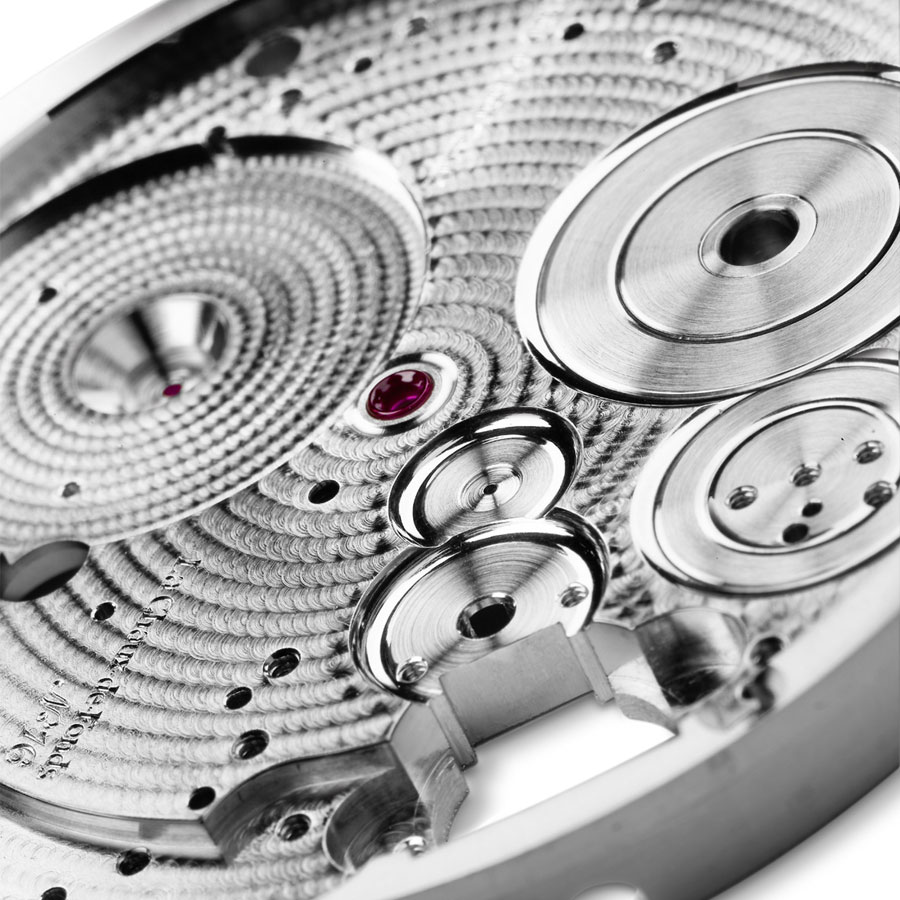 body shot The nickel silver main plate canīt hide itīs purpose; the iconic architecture of the three bridges layout of gear train and barrel is instantly recognisable. The plate is a meticulous guilloche work, featuring a snail finish of spiral grooves. 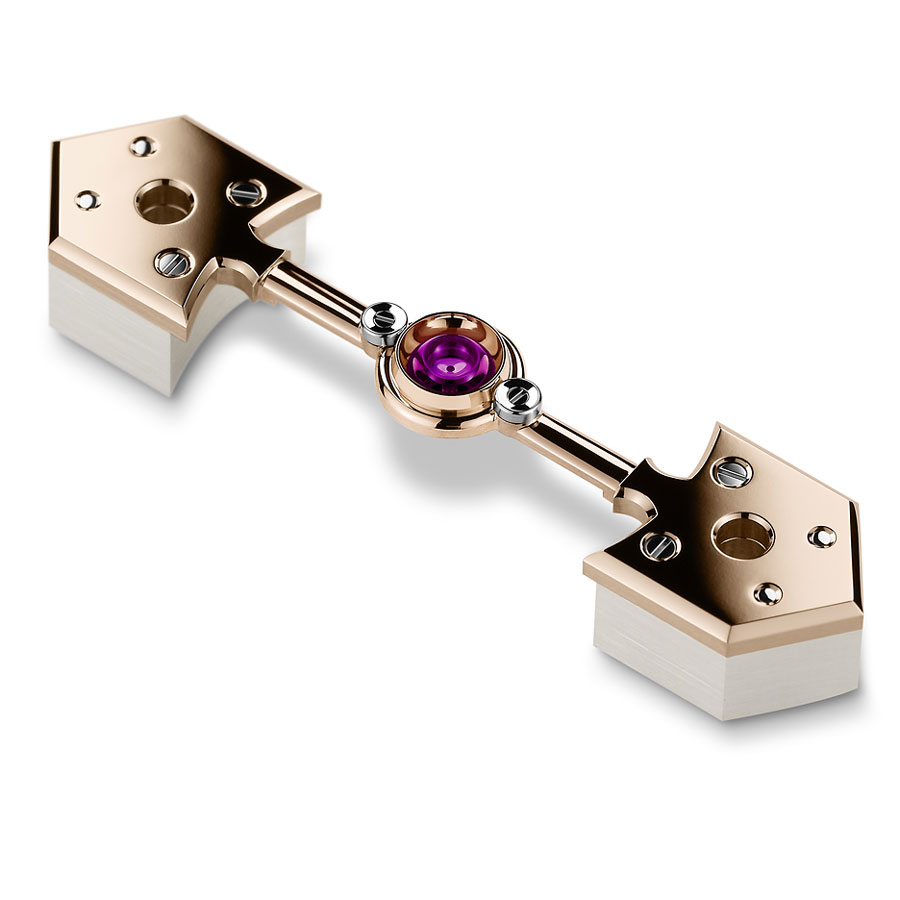 bridge The bridges undoubtly account for much of the movementīs visual impression.
Being central parts, every attention is spend to achieve an exceptional finish, which represents over one month of work. For each of them! Every component is finished and decorated with the same care, regardless if visible after assembly - a sign of excellence. 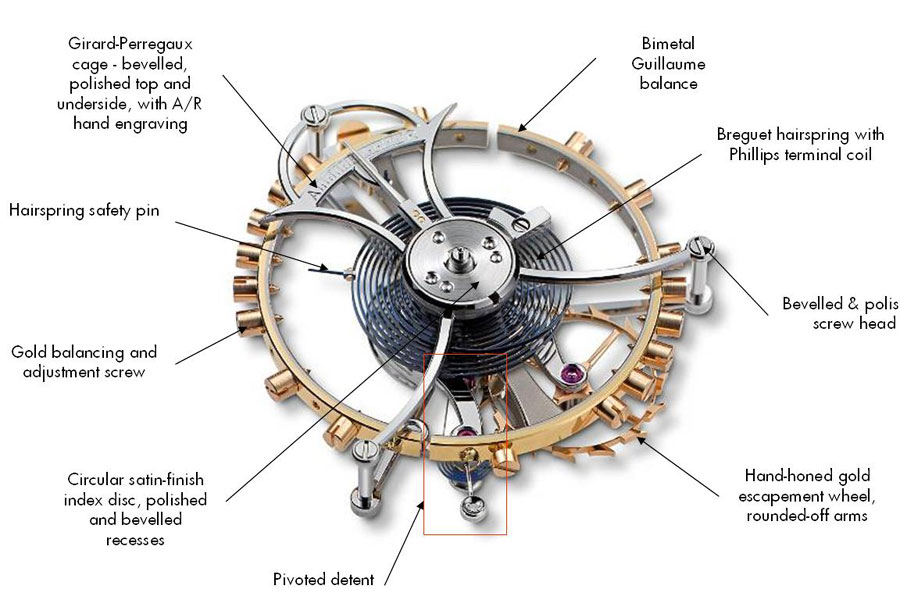 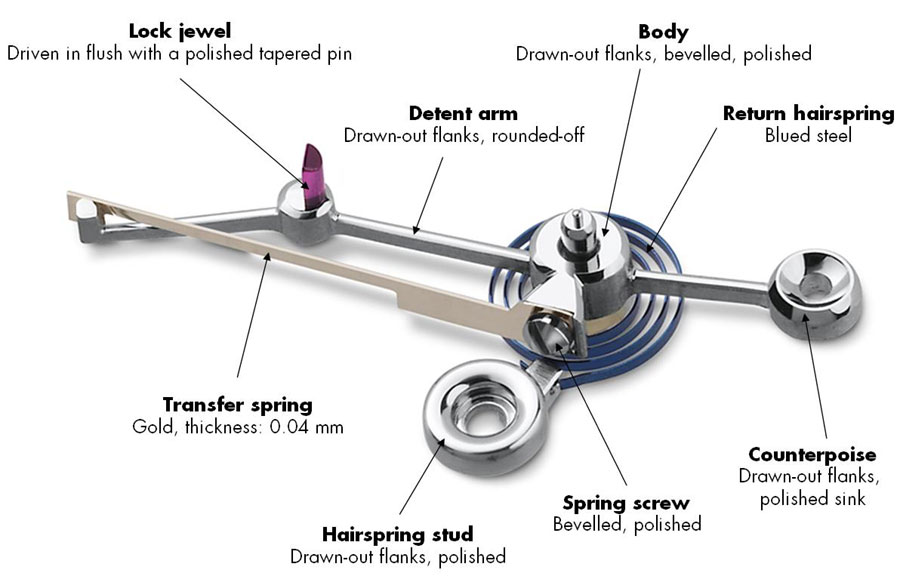 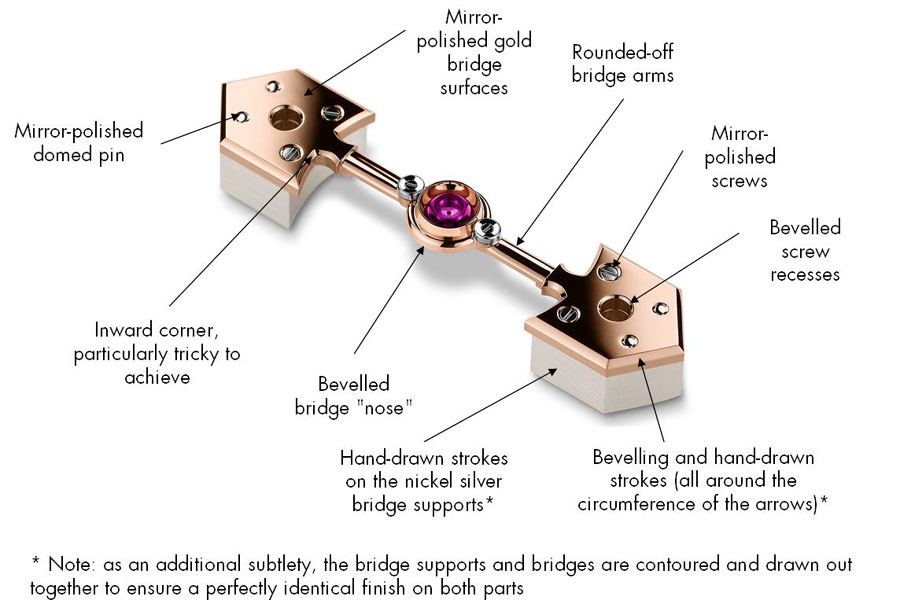 the result of hours and hours of manual work SETTING AND ASSEMBLY
Prior to assembly each of the movement's 249 components has to be corrected by hand.
This requires a lot of time. And manual precision is essential while adjusting all components, ensuring perfect fit and operation. In addition, the watch is prepared for an optimal accuracy. A lot of time and tests goes into finding a constant rate as possible, in every position and at every temperature. Alas, the nature of the beast is such that any change might influence a different parameter; therefore it all needs to be done with great care. 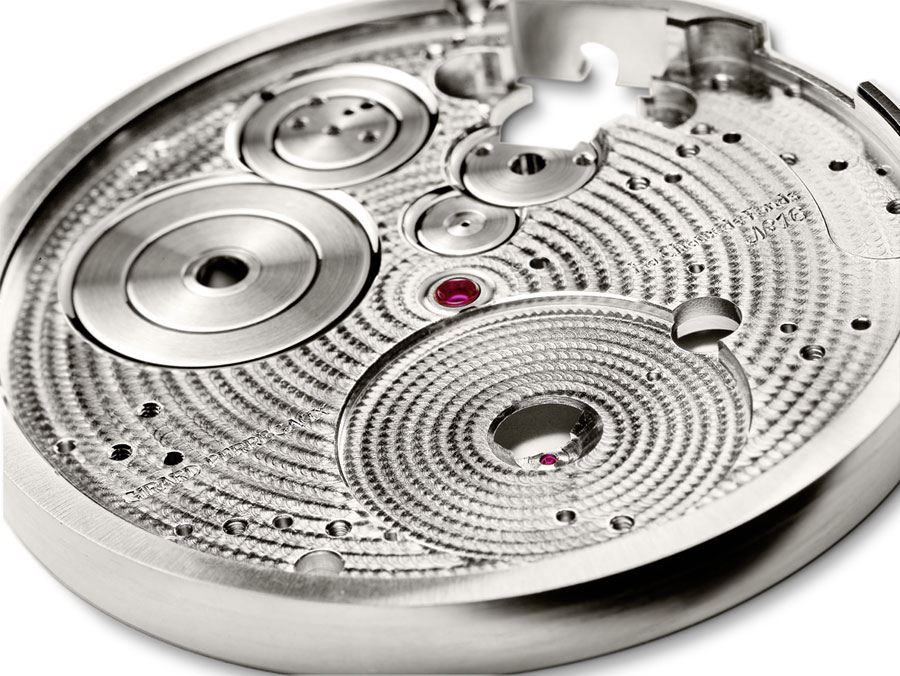 main plate, dial side CHRONOMETER CERTIFICATION
Following historic roots, this Tourbillon with three gold Bridges underwent severe tests by an independent
external organization and was awarded a Chronometer certificate by Switzerlandsīs official COSC. 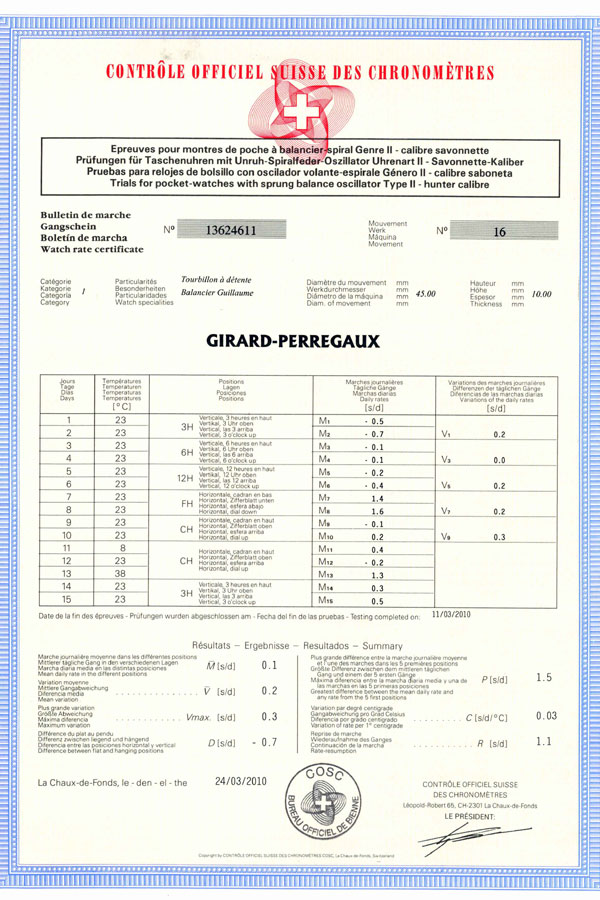 24 March 2010: success, certified CASING
The hunter-style case of solid pink gold features a secret mechanism to operate the dial side cover.
A push-piece located in the crown opens the cover, allowing for easy and immediate time reading. |
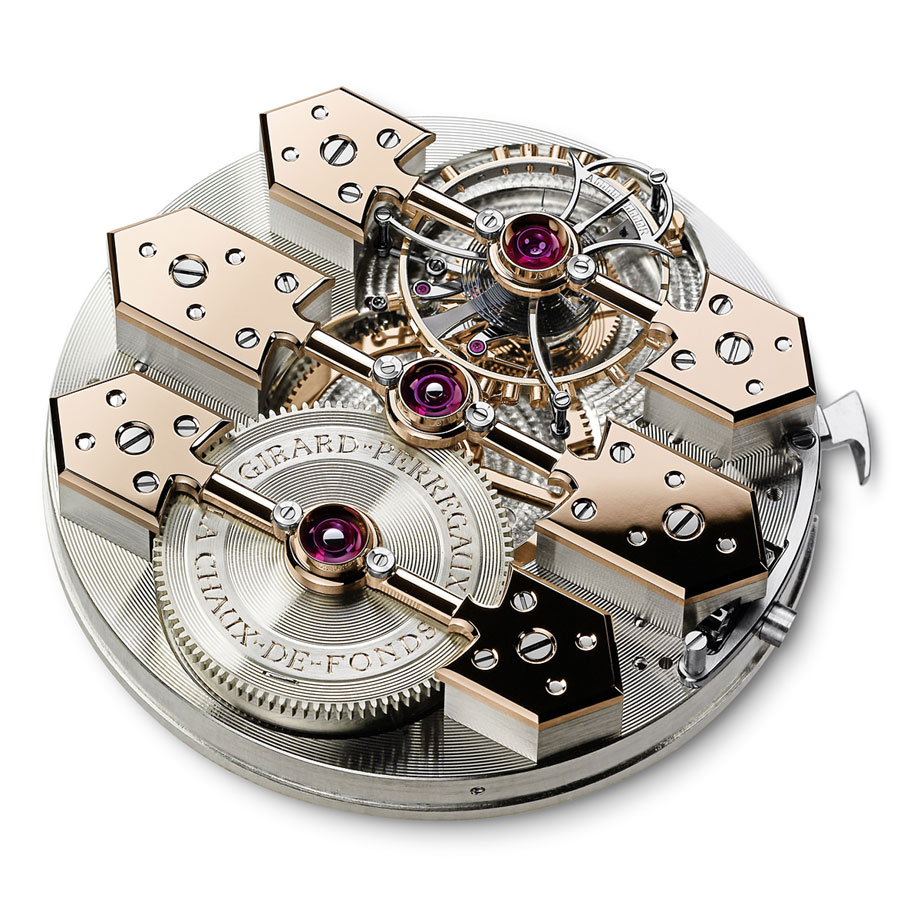 inner value |
DatasheetMovement
Exterior
|
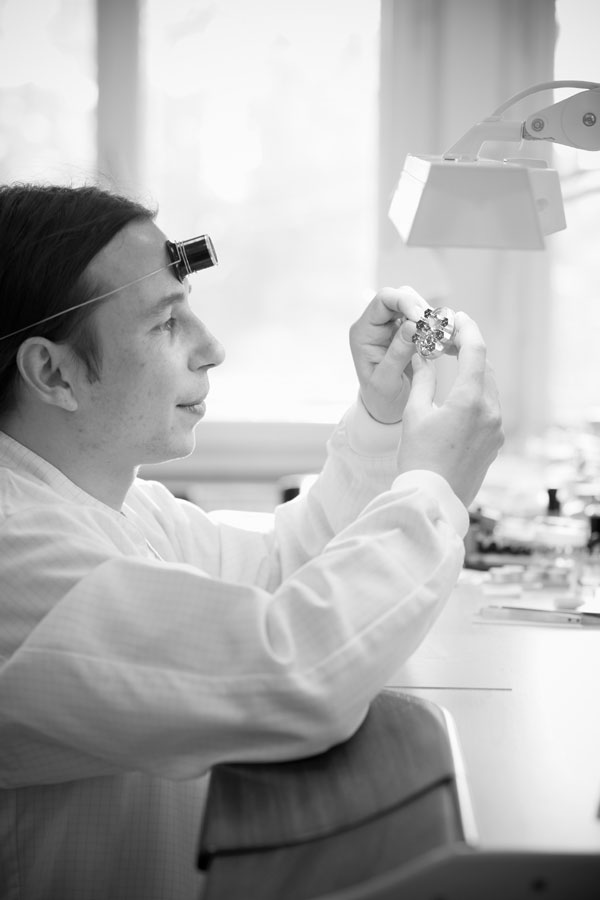 success |
ConclusionThe "Tourbillon under three golden Bridges" is a statement of craftmanship and science. It is an admirable achievement by many aspect: Creating numerous microscopically small components, mostly by hand, is an outstanding work. The finish, assembly and regulation of the watch from scratch, especially with such an unconventional escapement, is a challenge. And itīs well in line with traditions and values of Girard-Perregaux that span more than 210 years, with major chapters in the records of fine tourbillon watches since then. 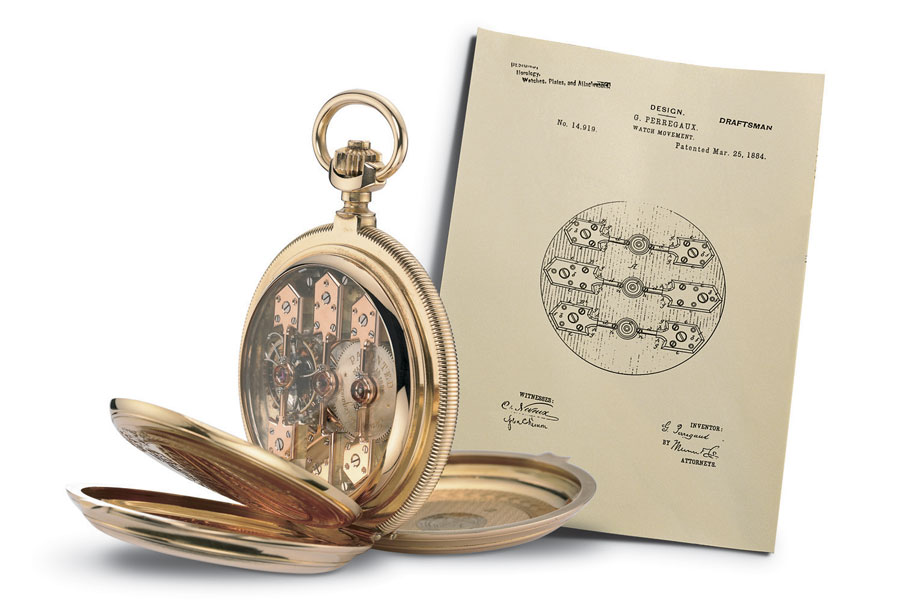 1884-1889 Itīs a great pleasure to see all this is still today alive and held high in the ateliers at La Chaux-De-Fonds, where the Valley of Dreams brings up Three Golden Bridges. With sincere thanks to Girard-Perregaux and particularly, Matthieu. |